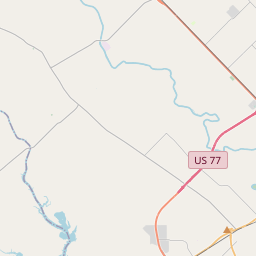First Baptist Church of Victoria







On May 15, 1852, eight men and women, including a slave, joined together to organize the First Baptist Church of Victoria. That evening they elected the Rev. D.B. Morrall as pastor, and he performed the first baptismal service the following morning. After six months, a Northern Baptist missionary, the Rev. J.A. Kimball, came to serve Victoria and the surrounding area. At that time, the Baptist congregation met in the local Methodist Church building, sharing maintenance expenses with their neighbor congregation.
Five years after the first church meeting, the Victoria Baptists met in a new structure, with a Baptist sanctuary on the ground floor and an Odd Fellows Lodge hall on the second floor of the frame building. The congregation continued meeting at their building, on Diamond Hill, until the Civil War; records indicate there was only one formal meeting between 1861 and 1877. That year, church trustees sold the Diamond Hill property and purchased a new site. In 1878, the congregation bought a steeple bell that had blown into the Gulf of Mexico when a storm hit Indianola. The bell was placed outside the church building and rung before worship services, and has since moved with the congregation to its subsequent sanctuaries, including a 1936 structure and later a 1960s sanctuary at this site.
Throughout its years as a congregation, Victoria's First Baptist Church has offered worship and education programs to its community. Its Sunday School program began in 1897. The congregation has supported the organization of local mission churches. In recent years, the church property has served as relief shelter for victims of natural disasters and the congregation has supported other community programs, demonstrating commitment to service. (2003)
As one of the most visible programs of the Texas Historical Commission (THC), historical markers commemorate diverse topics in Texas history, including: the history and architecture of houses, commercial and public buildings, religious congregations, and military sites; events that changed the course of local and state history; and individuals who have made lasting contributions to the state, community organizations, and businesses.
More history nearby
The first domed stadium in the world, the Astrodome, was built in Houston in 1965 and hosted numerous sporting events and concerts over the years.
In the early 19th century, Anglo-American settlers began to move into the area, attracted by the fertile land for agriculture and the potential for ample grazing. The Mexican government encouraged colonization, and by 1834, there were around 100 families living in the region. However, tensions between the settlers and the Mexican government eventually led to the Texas Revolution in 1835.
During the Texas Revolution, Victoria became a strategic point for both the Texian and Mexican armies. The Battle of Guadalupe River occurred here in 1835, where the Texian rebels under the command of George Collingsworth captured the Mexican garrison without bloodshed. The town of Victoria formally became the capital of the Republic of Texas in 1839 before it was moved to Houston and later Austin.
In the late 19th and early 20th centuries, Victoria County experienced significant growth and development. The railroad arrived in the late 1800s, leading to increased trade and the expansion of the local economy. The discovery of oil in the early 20th century further contributed to the county's prosperity. Today, Victoria County is a thriving hub for agriculture, oil and gas production, and serves as a regional center for healthcare, education, and businesses.
Victoria County Timeline
This timeline provides a condensed summary of the historical journey of Victoria County, Texas.
- 1824 - Victoria County is established as a Municipality of Mexico
- 1836 - Texas gains independence from Mexico
- 1837 - Victoria County is created as an original county of the Republic of Texas
- 1852 - The town of Victoria becomes the county seat
- 1860 - Population of Victoria County reaches 2,305
- 1874 - The Texas Mexican Railway expands into Victoria County, stimulating economic growth
- 1899 - Oil is discovered in the county, leading to a boom in the petroleum industry
- 1924 - The DuPont Company establishes a plant in Victoria County, contributing to industrial development
- 1930 - Population of Victoria County exceeds 30,000
- 1952 - The O'Connor-Proctor Building, the first air-conditioned building in town, is constructed
- 1960 - Victoria County Courthouse is added to the National Register of Historic Places
- 2008 - Hurricane Ike causes extensive damage to Victoria County
- 2019 - Victoria County celebrates its 182nd anniversary